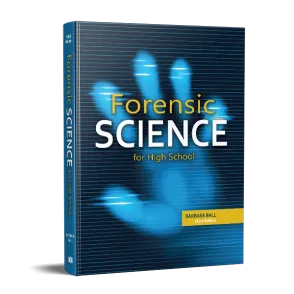From Crime Scene To Classroom
November 30, 2018

Captivating the interest of high school students can be a daunting task, but what happens when you pair your science curriculum with a popular and accessible subject like forensic science? Read about one teacher's experience introducing and incorporating Forensic Science for High School into her school's science curriculum.
"We started our forensics curriculum 12 years ago as a class designed to be high-interest, and also approachable for students who struggle. We had noticed a gap in our curriculum for students who may have failed a semester of one of the core science classes as a Freshman or Sophomore, and needed a credit for graduation. Forensics fit the bill perfectly.
We offer it as a one-semester course, and my sections are usually full. We have students of all ability levels, interests, and experiences, which makes for fantastic discussion. The class is only open to upperclassmen, and students have to be turned away each semester because the classes fill up quickly.
We started with the first edition textbook, which weren't even printed in color! We upgraded to the second edition, which included more chapters and color pages. We have also upgraded to the third edition, and have been happy with the updated Case Studies and chapters on cyber crime.
The included resources are very helpful when designing the course. The test bank is very handy for creating assessments. We have developed a case study worksheet, which students fill out as they read the information. I have also created a guided reading that is used at the start of each chapter. We take a day in class for students to read and answer the questions, which serves as their notes for the quiz or test.
Over the years, I have supplemented the curriculum with activities I have gotten from various sources. We include blood-typing, vector analysis, gel electrophoresis, drug identification guides, and various means of fingerprinting. We also read the book Catch Me If You Can by Frank Abagnale, and students write reflective paragraphs about what we read each week. We will also occasionally watch a true crime show and students will use the case study forms to keep track of the information in the video.
I like how the material does not talk down to the students. They are expected to integrate the charts and graphs into the reading, which can be done seamlessly. It is approachable, and interesting to the students. Every day they come into class and are asking, "What do we get to do today?" That doesn't happen in other science classes. The students tell me it is the only textbook they actually read."
Carrie M.
Science Department
Carbondale Community High School
